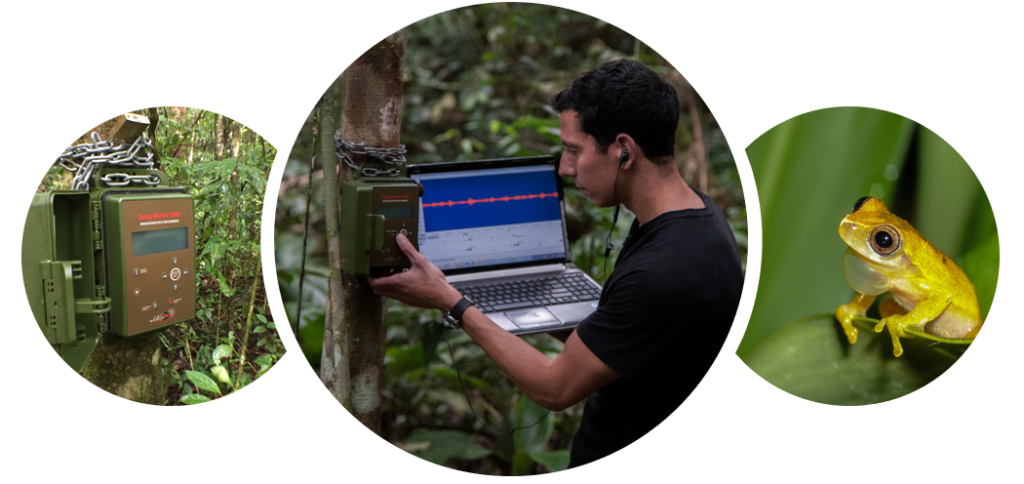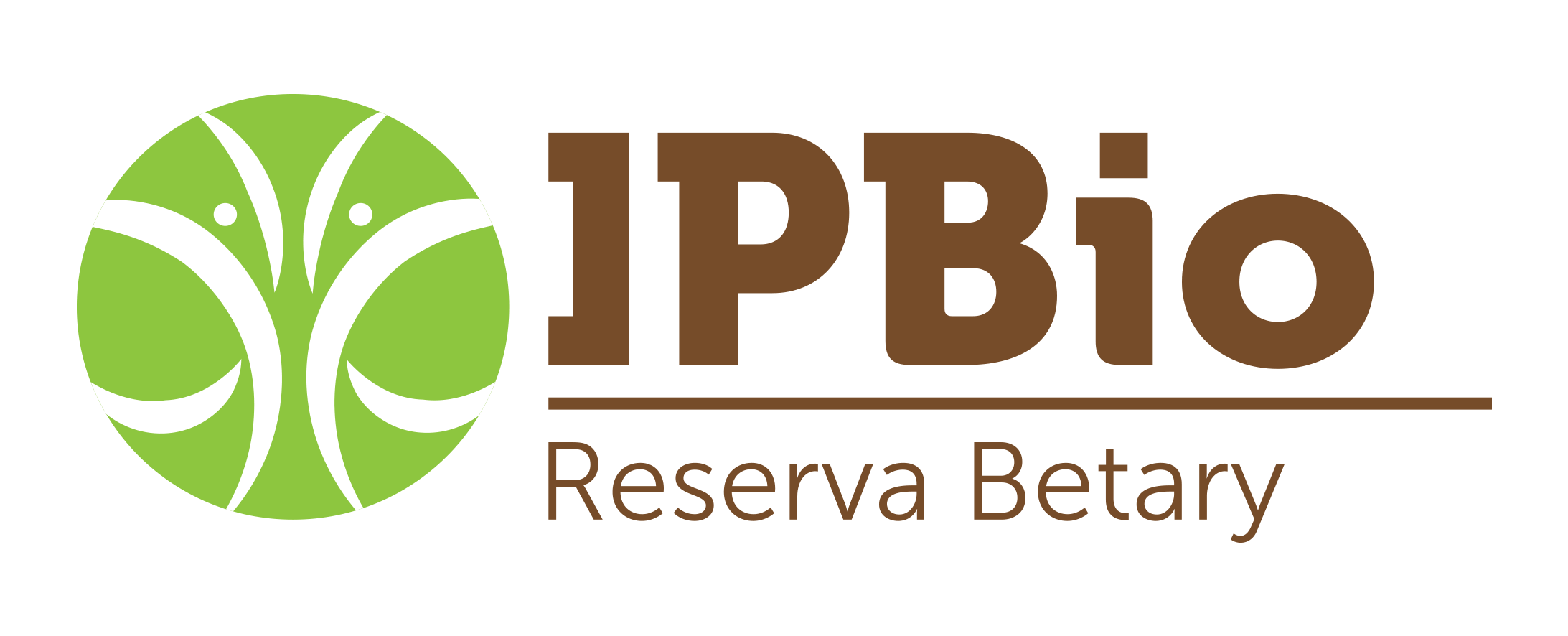
Professional Voices is all about hearing from the professionals that are out there in the world doing ecology research or implementing ecological concepts in some way. Today we hear from IPBIO - Reserva Betary staff Imran Viroomal - Chief Communications Officer, Ana Glaucia de Martins - Manager and Biologist, and Henrique Domingos - Biologist.
J: Welcome to Professional Voices Imran - so, what is IPBIO?
I: IPBIO is the Instituto de Pesquisas da Biodiversidade or the Biodiversity Research Institute, is a non-governmental, non-profit organization that develops and supports projects in environmental education, conservation and scientific research on biodiversity, ecology as well as on the behaviour of species of fauna and flora of Brazilian ecosystems.
J: What are your long-term goals?
I: IPBio´s long-term goal is to create a national network of 5 research centers in every major biome of Brazil. IPBio already has a total of 3 reserves in the Atlantic Forest, Amazon, and Cerrado but hopes to purchase and set up research centers in the Pantanal and Caatinga soon. The creation of this national reserve and research center network can provide useful opportunities for large-scale research, conservation projects, and economic development in the area of sustainable tourism.

J: We understand that you used some Wildlife Acoustic equipment for research?
I: Yes! In 2016, IPBio received a grant from Wildlife Acoustics whereby two Song Meter SM4 recording devices and Song Scope data analysis software were donated. IPBio set off to create a sound bank of all vocalising species on our reserves across the different biomes. In 2018, Wildlife Acoustics was kind enough to update us with their Kaleidoscope software which took the technology of data analysis to a whole new level. In 2019, IPBio was asked to participate in the largest bioacoustics project to take place related to Anura.
J: Can you tell us how you used the SM4?
I: Yes, I worked with Ana Glaucia de Martins, Henrique Domingos, and Isais Santos in the Atlantic Forest. We were tasked with selecting two sites and setting up the SM4 recorders.
A: We decided to select locations near ponds as there was a higher chance of catching vocalisations near a water source, as amphibians use these ponds to reproduce. Moreover, IPBio does regular nocturnal searches so we already were aware of good sites for this type of data collection. We are extremely proud to be participating in such an essential and large-scale research project. Amphibians are highly sensitive to their environments and hence are often used as ecological bioindicators of the well being of the environment. Globally, we have been seeing an unprecedented decline of amphibians. We also conduct amphibian research using a methodology called pitfalls where over 5 years we have shown a dramatic decrease in amphibian populations and you must keep in mind that we are in the most preserved area of the Atlantic Forest. Much work needs to be done with amphibians and conservation as a whole to prevent this continued extinction trend.
I: In order to set up the equipment, we first configured all the settings on the SM4 recorder such as frequency, time of recording, and many other variables. Then we headed to the selected location sites with the recorders and connected them to a tree nearby the pond so that it will capture the audio.
H: Once the recorders were set up, we had to regularly, about every two weeks or so, go to collect the SD card with the audio files to transfer them to the project coordinator. We would always also check and change the batteries of the recorder if needed and just double check all the configurations on the recorder to make sure all was working as planned. We have done this for a year already but it appears that this project will be extended for another whole year. Find out more here.
I: Now we wait for the results!
J: That's really exciting to hear - Good luck with your research! We look forward to hearing from you again with an update.

Case study: Felipo Toledo - Project Coordinator, UNICAMP University
UNICAMP University worked collaboratively with amphibian specialists and NGOs like IPBIO, who monitored amphibian vocalisations from over 50 sites across Brazil - from Rio Grande do Sul up to the Amazon. The initial project lasted a year and was extended by one more year to expand the data collection.
The aim of the study was to understand the current and potential impact of climate change on the vocalisation patterns of the amphibians. In order to look at how populations of Leptodactylus flavopictus responded to local conditions, studies were conducted in the, climatically different, south, center, and north regions of the Atlantic Forest.
A recording of Leptodactylus flavopictus can be found here. The monitoring of this species is particularly important as this species, which is endemic to the Atlantic Forest, is considered rare. The team of researchers collected 365 days worth of recordings from each of the 50 sites, and resulted in the collation of a colossal amount of data. This data would have been in good 'hands' in Kaleidoscope, as it is designed to make the analysis of batches of data easier.
More about the acoustic recording tech!
Wildlife Acoustics are forever refining their technology to make it suit the user needs. The Song Meter SM4 is an industry-standard wildlife audio recorder, which can pick up acoustic vocalisations from birds, frogs or others that produce sound within the acoustic range of 20 Hz to 20,000 Hz. Wildlife Acoustic ultrasonic recorders, in comparison pick up vocalisations within the ultrasonic range of 20,000 Hz and higher.
The Song Meter SM4 can be used for species inventory, presence/absence surveys, endangered species detection, and habitat health monitoring, storing terabytes of data over the course of months. The unit has two second-generation built-in low-noise microphones that have been engineered to give a favourable signal-to-noise ratio (dB). This means that there is more useful information (signal) than unwanted (noise). The dual-channel feature of this unit allows recording to continue should one microphone become damaged. It is also possible to record in stereo or mono and from near or far (with the help of an extension cable). Further to this you can use a preset schedule of recording or create your own schedule, by selecting a daily schedule or customising advanced schedules that depend on a date or have different recording schedules on different days.
The SM4 weighs 1.3 KG with batteries, and is powered by four D cell batteries and includes flanges that accommodates a range of mounting options including clamps, screws and bungee cords. There is also the opportunity to attach an adjustable cable lock so that you can secure your device. On the left and right sides are two weatherproof built-in microphones and on the right side there is a vent to prevent condensation build, whilst on the left side there are three connections: one for external power and two external microphone connections that allow you to use remotely placed microphone or hydrophone attached to an extension cable. The recorder is integrated into a weatherproof tough case that can be padlocked shut. Inside there are two SD memory slots and a connection for a GPS receiver. Additionally there is a headphone connection and an internal/external power switch so that you can select between drawing power from internal and external power sources.
In addition to the unit there are plenty of accessories that can be used for various applications. These include: an Acoustic Microphone; a Microphone Extension Cable (3m, 10m, 50m); Power Cable; Battery Pack (20 Ah, 90 Ah); Security Case and Padlock; and Garmin GPS.

So what's new in the acoustic recording world?
This year Wildlife Acoustic released the Song Meter Mini Acoustic Recorder. This device is a smaller, more lightweight, and more affordable alternative to the Song Meter SM4 Acoustic Recorder.

It has comparable recording quality and brings professional acoustic recording within reach of consultancies, research projects, and citizen science projects.
The unit is easy-to-use, compact and robust, with a capacity to record up to 1200 hours * of acoustic vocalisations. It has a built-in acoustic mono microphone that delivers comparable performance to the SM4 and can also be fitted with an optional second microphone to achieve stereo recording. The Song Meter Mini can be configured via Bluetooth using a free app on your mobile device - this enables you to change settings, schedule recordings, and receive recorder status information wirelessly. You can download the Song Meter Mini Configurator application from The App Store or Google Play , although it is worth noting the operating system requirements.
* Recording durations last for 240 hours on a set of internal alkaline AAs, or 1200 hours when using the optional internal Lithium Ion battery battery pack accessory
The Song Meter Mini is much like the SM4 in that it has a flange that enables you to mount your device to the surface of your choice, whilst using a cable lock to secure it into place. The lid of this device snaps off (it is not hinged) - it has a gasket that creates a seal. Inside the is room for four AA batteries or a lithium-ion battery, and a slot for your SD card.
If you need to know how to start using your Song Meter Mini along with the app you can take a look at the quick start guide.

Can you handle the data?
In short, yes you can! Kaleidoscope is a neat piece of software that is a versatile sound analysis tool for acoustic and ultrasonic data. With this software, you can analyse large amounts of data (terabytes). It has the capacity to undertake batch processing and file conversion and has a unique feature that allows files to be compared and clustered into similar groups. Each cluster can then be examined, listened to, and identified to species, saving hours of work. Important clusters can be named and saved. All kinds of bioacoustics data can be analysed this way, and clusters can be transformed into species-specific Classifiers that will automatically identify species in all future recordings.
The free Viewer element allows you to examine sound files visually, listen to files, manually tag files with identification information, and apply bandpass filters - passing frequencies within a certain range, and attenuating or rejecting frequencies outside a range. If you upgrade to the Pro version you will be able to quickly sort, label, and identify bird songs, frog calls, and bat echolocations from weeks, months, or even years of recordings. The Pro version is designed to minimise the time you spend on your data so that you can start the process of figuring out what your data demonstrates sooner.
If you would like to register your interest for a training session on Kaleidoscope please email [email protected] and state if you would like to learn about acoustic analysis or ultrasonic analysis.

More about the authors

Imran Viroomal - Chief Communications Officer

Ana Glaucia de Martins - Manager and Biologist
Henrique Domingos - Biologist
Find out more about IPBIO, and follow them on Facebook and Instagram


